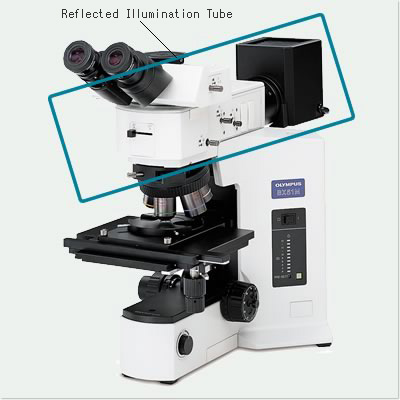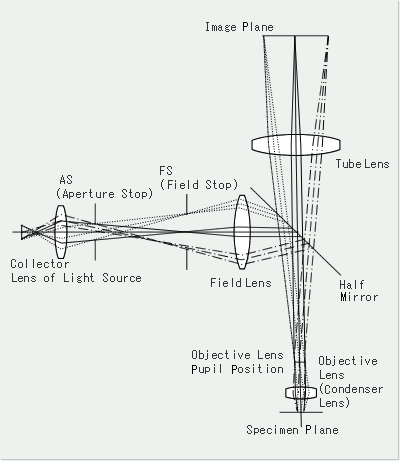Beleuchtung durch Auflicht
An optical microscope that observes an "opaque specimen" such as metallogy or mineralogy specimen and semiconductor wafer adopts a "reflected illumination optical system" that illuminates a specimen from the objective side. A common upright reflected illumination microscope (Figure 1) adopts such a configuration that a reflected illumination unit is inserted between the microscope main frame and observation tube. This reflected illumination optical system (Figure 2) configures the Koehler illumination system and it forms a light source image at the position of the aperture stop with the light beam emitted from the light source through the collecting lens, first. This light source image as the secondary light source is focused on the pupil position of the objective lens by passing through the field stop and field lens and reflecting with the half mirror (half-transparent mirror) arranged at an angle of 45 degrees with respect to the optical axis. With this image as the tertiary light source, the objective lens itself plays a role as a condenser and illuminates the specimen plane as a telecentric system. The light beam reflected on the specimen plane passes to the image forming optical system through the half mirror after passing again through. the objective lens.
Figure 1. Upright Reflected Illumination Microscope and Reflected Illumination Tube

Figure 2. Optical Configuration of Reflected Illumination Optical System

Related Link
> Top of Digital Microscope page